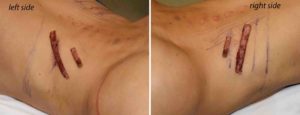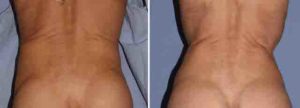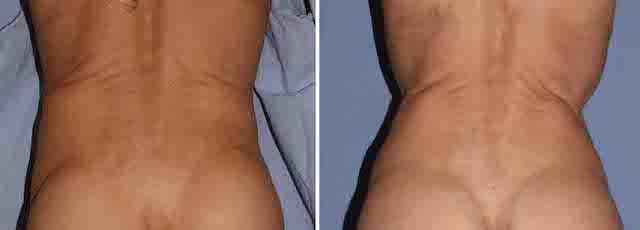Background: Rib removal has proven to be a successful waistline reshaping procedure in the properly selected patient. Good patients for the procedure are thinner patients that do not have a lot of subcutaneous body fat. Patients that have had prior liposuction and have expended all other surgical efforts for their waistline would also usually qualify. The few patients I see that corset train on some basis usually fulfill the prior two criteria as well.
Rib removal surgery is all about removing the last anatomic barrier for inward waistline movement. The downward angulation of the free floating #11 and #12 ribs due to the lack of attachment to the anterior subcostal ribcage explains why their reduction works in that regard. Both rib ends are important but probably #11 is more so because it is much longer and sticks out further to the side. It is important to note that such rib removal is partial as removal all the way back to the vertebral facets does not increase its effects.
Limiting the scar in rib removal surgery is important given the aesthetic nature of the procedure. The best location of the incision is out over the end of rib #11 in an oblique back skin incision. This can easily be found by having the patient turn from side to side. By placing the incision along this skin crease and keeping its length around 5cms usually makes for discrete and reasonably concealed incisions.
Case Study: This tall thin and very athletic female had prior breast and buttock implants. She desired a reduced waistline appearance through rib removal and replacement with larger buttock implants. She has so little subcutaneous fat that her many of her ribs could be easily visualized externally.


Case Highlights:
1) Rib removal always includes the subtotal removal of #s 11 and 12.
2) The patient that often has the most profound effect is in the thinner body types.
3) Rib removal scars placed in the oblique orientation can heal extremely well with minimal perceptibility.
Dr. Barry Eppley
Indianapolis, Indiana



